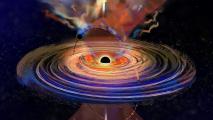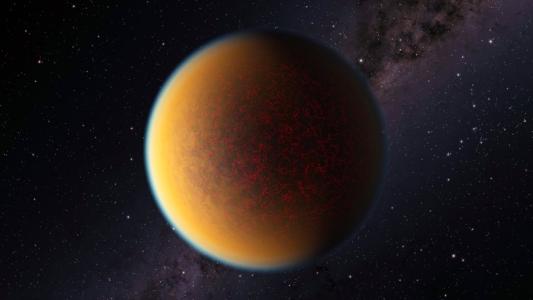For the first time, scientists have looked at the heart of Mars — the planet’s core. They measured its size by listening to “Marsquakes,” which aren’t too different from earthquakes. The eavesdropping machine that did the listening: NASA’s InSight lander, positioned on the Red Planet’s surface.
It turns out, Mars’ core is much bigger than anyone expected.
How to Listen for Marsquakes
NASA sent InSight on its Mars mission in 2018. The goal was to collect seismic data from sensors that track the noises produced by Marsquakes. That seismic noise bouncing around inside the planet helps measure the size of Mars’ core. (It’s also how the cores of Earth and the moon were measured.)
Divya Persaud, a planetary scientist at UCL who was not involved in the research, told Science Focus that Mars’ core was measured with a seismometer.
“It’s like a very sensitive ear pressed against the ground, listening for energetic events in the interior of a planet. On Earth, these are usually earthquakes. InSight has detected hundreds of seismic events in the first Martian year of its mission,” she said.
InSight landed near the Red Planet’s equator and started listening for seismic energy. The sensors calculate where seismic waves start and end and measure how long it takes for the wave to travel through the planet. With this information, scientists can calculate the planet’s density and estimate the depth of the core-mantle boundary — thus measuring the core’s size.
NASA estimates Mars’ core to be approximately 1,835 kilometers in diameter (give or take 25 kilometers). This is a lot bigger than scientists’ had thought: despite Mars being only 15% the size of Earth, its core is actually 50% as large as our own.
Scientists already knew the mass of Mars, so a bigger core implies that the center is less dense than previously thought — likely due to lighter elements like oxygen.
The discovery essentially wraps up InSight.
“We have met our science objectives about the interior structure, we’ve looked from the crust to the core, and measured our Martian seismicity,” Mark Panning, project scientist for InSight at NASA’s Jet Propulsion Laboratory (JPL) in Southern California, said, reports Space.com.
Mars mission, accomplished.
What It All Means
Planets like Earth and Mars are divided into three layers: the crust, mantle, and core. Knowing the scale of those layers is vital to understanding how the planet formed. In addition to the moon and Earth, measuring Mars’ core means researchers have another point of comparison for how the Solar System’s planets evolved, reports Nature.
Besides Mars, only Earth and the Moon have had their cores measured. The addition of Mars’ core measurements will paint a more complete picture of how the planets evolved in our solar system and how Mars lost its atmosphere and magnetic field.
“Understanding the structure of Mars tells us about how much heat it started with, at what depths, and at what rate through time, and is an important puzzle piece in the bigger mystery of how and why the planets formed the way they did,” Persaud said.
We’d love to hear from you! If you have a comment about this article or if you have a tip for a future Freethink story, please email us at [email protected].






